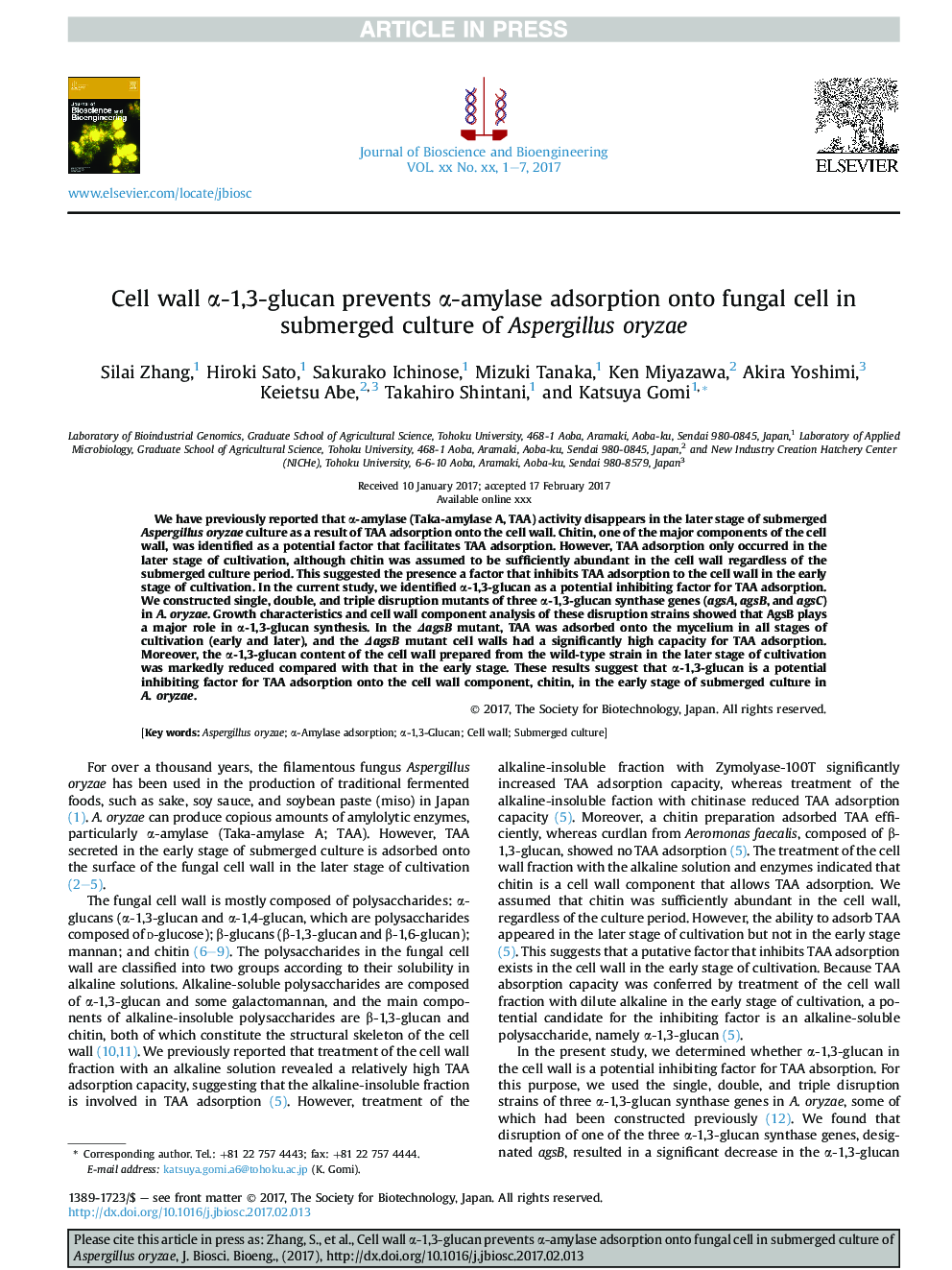| Article ID | Journal | Published Year | Pages | File Type |
|---|---|---|---|---|
| 4753307 | Journal of Bioscience and Bioengineering | 2017 | 7 Pages |
Abstract
We have previously reported that α-amylase (Taka-amylase A, TAA) activity disappears in the later stage of submerged Aspergillus oryzae culture as a result of TAA adsorption onto the cell wall. Chitin, one of the major components of the cell wall, was identified as a potential factor that facilitates TAA adsorption. However, TAA adsorption only occurred in the later stage of cultivation, although chitin was assumed to be sufficiently abundant in the cell wall regardless of the submerged culture period. This suggested the presence a factor that inhibits TAA adsorption to the cell wall in the early stage of cultivation. In the current study, we identified α-1,3-glucan as a potential inhibiting factor for TAA adsorption. We constructed single, double, and triple disruption mutants of three α-1,3-glucan synthase genes (agsA, agsB, and agsC) in A. oryzae. Growth characteristics and cell wall component analysis of these disruption strains showed that AgsB plays a major role in α-1,3-glucan synthesis. In the ÎagsB mutant, TAA was adsorbed onto the mycelium in all stages of cultivation (early and later), and the ÎagsB mutant cell walls had a significantly high capacity for TAA adsorption. Moreover, the α-1,3-glucan content of the cell wall prepared from the wild-type strain in the later stage of cultivation was markedly reduced compared with that in the early stage. These results suggest that α-1,3-glucan is a potential inhibiting factor for TAA adsorption onto the cell wall component, chitin, in the early stage of submerged culture in A. oryzae.
Related Topics
Physical Sciences and Engineering
Chemical Engineering
Bioengineering
Authors
Silai Zhang, Hiroki Sato, Sakurako Ichinose, Mizuki Tanaka, Ken Miyazawa, Akira Yoshimi, Keietsu Abe, Takahiro Shintani, Katsuya Gomi,
